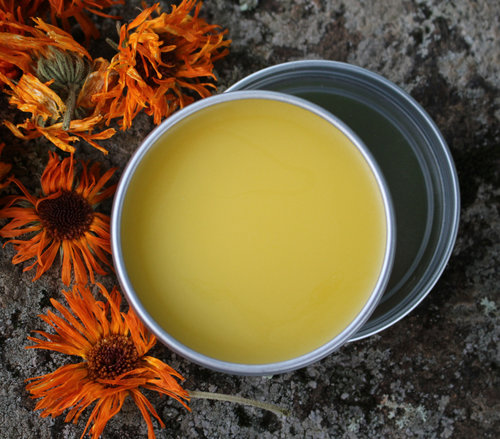Herbal Healing Salve Uses
Humans have practiced the art of healing with herbs for millennia. In the modern world, it is hard to envision a time when there were no drug stores and patented pharmacological medicines. But when the world was a simpler place, apothecary herbalists and botanists harvested roots, berries, seeds, leaves, bark and flowers to make the concoctions needed to soothe an irritation, heal a wound or cure an ailment.
Everything old is new again
Herbal treatments remain a primary part of health care for an estimated 80 percent of people worldwide, according to the World Health Organization. Whether you’re getting herbal supplements from your local organic retailer, ordering your creams and salves from the Internet or growing and grinding your own plants for making your herbal teas, you've discovered that the benefits and remedies of nature’s bounty aren't something new.
You’re feeling better, inside and out, because of the wisdom of the ancients that has passed from generation to generation across the centuries. From the benefits of goat milk soap to the use of lye in soap to form it into solid bars, the knowledge of herbal soaps, salves and balms is a legacy shared around the world.
Herbal healing salves: a time-honored remedy
Herbal salves are simply infused herbal oils combined with some type of wax – usually beeswax – to thicken them into a solid state at room temperature. Some salves can contain finely ground or pulverized components of the herbs themselves. These salves are for treating local conditions; the effects target the area of the body on which they’re applied.
Our skin is absorbent but it is selectively absorbent, meaning it is particular about what gets through its layers and into our bloodstreams. Because the main ingredients forming herbal salves into a solid at room temperature are oil and wax, these soothing remedies sit on the skin and are not as quickly absorbed through the skin’s layers.
Uses for healing salves and balms
Herbal healing salves are the time-honored first line of defense for first-aid treatments a family looks to for soothing burns, scrapes, wounds, bruises, diaper rashes and other such maladies. Some popular uses for these treatments may include:
Treatment of poison oak, poison ivy or sumac reactions
Cracked, dry skin.
Hives, psoriasis or eczema.
Insect bites, stings, sores including bed sores in the elderly or inflamed bunions.
Minor burns and sunburn.
Blisters, boils, abscesses and other skin ulcers.
Rashes of various types, including fungal infections such as ringworm.
Minor wounds, scrapes and cuts.
Make your skin the best it can be
If you’re concerned about chemicals and preservatives commonly found in retail skin-care products, herbal salves and balms may be just what you’re looking for.
Moisturizers are generally more effective when applied to wet skin. Doing this helps to seal in the water on your skin. Also, wet skin tends to be more porous so that treatment ingredients, such as those that hydrate the skin, can penetrate to the deeper layers of the skin.
Salves and balms are the thicker, most nourishing option when moisturizing the skin, so it is not something you’ll want to use under makeup. Many salves and balms are also usable on lips and on dry or rough spots all over the body.
One word of advice: be careful when layering products. If you’re slathering on product after product to irritated skin, you could end up with results that are not what you’re expecting. Keep the number of products you’re using concurrently to a minimum, and space out your applications of different products. Be sure to give each salve time to sink into your skin before moving on to another.

